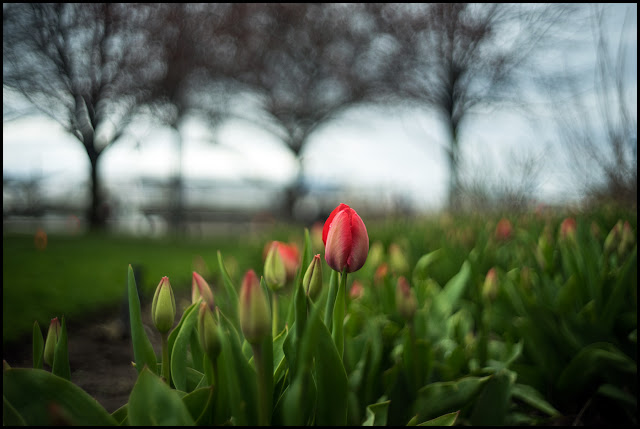Minolta Minoltina AL-s with Rokkor-QF 40mm f1.8
The Minolta Rokkor-QF 40mm f1.8 came from the Minoltina AL-S rangefinder. The camera had sticky shutter below 1/15 second, although everything else seemed to work fine. Anything not perfect is an excuse to take the camera apart for the lens :)
I removed the lens from the camera, removed the shutter blades, and used a 58mm reversing E-Mount adapter. I must say, this is by far the best hand converted rangefinder lens I have ever done. It looks pretty nice too. With a short flange, this lens did not need much space between the mount and the lens. It looks compact and small when it's mounted on the A7, and it's solidly built, like most old lenses. I really like it.
Rokkor-QF 40mm f1.8 on Sony A7
The hardest part of this conversion was infinity calibration. Having to file the shim for exact thickness took the most time, and at the end, it was still a bit too thin and focuses slightly past infinity, but I am not ready to go through another hour and a half to do it again. Next time, I think instead of a metal retention ring I used from the filter as a shim, I should just cut the shims using plastic sheets. Should be much more precise and take far less time, until I get my lathe to machine the mount to the exact measurement I need.
Bokeh with busy background
The lens board was cut and filed to the diameter of the lens, and fits perfectly within the 55mm filter ring. The only problem is the focus glide column that protrudes when focused to infinity, and hits the mount. I had to file a gap on the adapter to allow it to extend fully. The focus guide, which is a small piece of metal that guides the focus glide column so that it won't move or wobble sideways when focusing, used to be on the outside of the lens board, I made a smaller version of it and mounted inside. This looks neater and when I eventually have a metal lathe, it would be much easier to machine the mount and screw on top of this lens board.
Wide open, very sharp, but vignetting is quite severe
I retained the original focusing mechanism, to keep the lens as compact, and original looking as possible. The minimum focus distance for this lens is normally at 0.8 meters. Far too long for my liking, so I modified the focus travel stopper to allow the focus ring to turn the lens outwards more, which increases the space between lens and sensor, and thus closer focus. It now focuses to about 0.4 to 0.5 meters, like most modern standard lenses. The only cosmetic issue is that there is a small gap between the focus ring and the lens body at minimum focus distance. Oh well, can't have everything!
At f8. Very sharp across the whole frame.
At maximum aperture, the lens behaves like most old lenses: it's quite sharp, but lacks contrast. I think the shim I filed wasn't perfectly flat. The left side of the image is slightly sharper than the right side, and this is noticeable at large apertures. From f8 on, the lens is sharp across the frame with relatively good contrast. But it's the bokeh I am most interested in. This is what shows the most characters of the lens.
More Bokeh Shots
More Bokeh Shots
The bokeh is quite similar to many of the Japanese rangefinder lenses I have used. Slightly swirly wide open. This is not to say the bokeh is not pleasing. In fact, I think it's quite nice to my eyes. It's just not so unique.
I really like this lens, for its compact size and relatively good optical quality. It really is a nice walk around lens with a focal length that falls between a wide angle and a standard lens.
No Lens evaluation is complete without a hydrant shot :)








I also noticed that older range finders were often in this middle ground. I recall reading that 40mm is actually more correctly normal. Either way my first ever 35mm camera was also a range finder with a 44mm lens. No wonder I like my 20mm on m43
ReplyDeleteYup, now that I am paying more attention to old rangefinders, I noticed many of them are 40 or 45mm.
DeleteBeatiful work, how did you remove the lens from the mounting plate that screws onto the original camera? Thank you.
ReplyDeleteI did not remove the mounting plate. I just cut it to the shape of a circle because the plate is needed for the focus rail to work.
DeleteAhh I see I went too far & will need to get a focus helicoid.
ReplyDeleteThanks!
This comment has been removed by the author.
ReplyDeleteHi nice work did you know if this would work canon eos 1ds. If how would you do it. Thanks in advance. By the i really love your work.
ReplyDelete